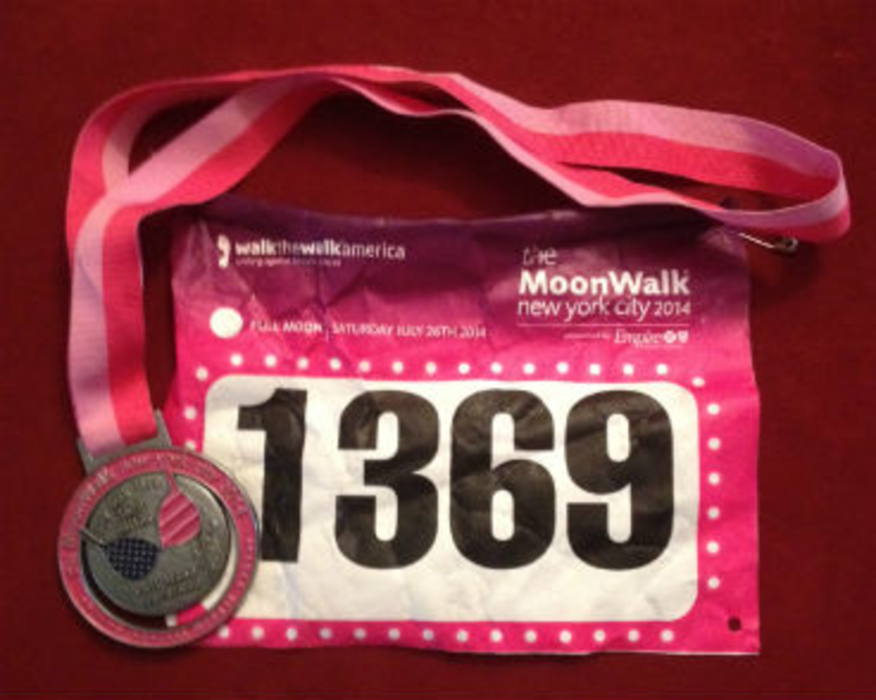At 10:30 p.m. this past Saturday about 1,500 women and a handful of men decked out in the most elaborate brassieres you can imagine gathered at the starting line of the second annual Moonwalk New York City. I was one of them.
What on earth were we doing? We were participating in a power walking race hosted by Walk the Walk, a charitable organization that funds breast cancer causes like research and support for women battling breast cancer. Some of us were going to be walking a full marathon (26.2 miles); others were going to power through a half. All of us were brimming with enthusiasm and had made concerted efforts to raise money and awareness for Walk the Walk.
There are many races and other activities that support breast cancer research and related initiatives. So, why the Moonwalk? It’s the unique connection participants have with the event. We want to support this specific and important cause, and we want to have fun doing it. Big fun that makes a statement and gets noticed. More, we want to make a difference for others while challenging ourselves. We’re a unique “customer segment” that identifies with Walk the Walk’s mission and wants to be part of the action.
What’s all this got to do with marketing? Everything about the organization’s Moonwalk (and Sunwalk in other cities) is an experience that has marketing build into it. Consider this: 1,500 participants wearing festively adorned bras powering walking their way through the streets of Manhattan on a Saturday night, passing by revelers enjoying a beautiful evening at sidewalk cafes and bars or making their way to a show or party or late night dinner—many of whom stopped their conversation midstream to observe and discuss the uniquely dressed racers, and in somes cases to cheer us on. Yeah, that’s marketing in action.
For participants the experience is immersive: You train, fundraise, decorate your bra, power walk for hours, cheer, celebrate, tell everyone you know. For onlookers and friends and family—many of whom are prospective participants—the experience is participatory by extension; it may be as simple as spreading the word by discussing the event or as involved as helping the walkers to train or adorn their bras. There are also the many volunteers whose participation, support, and enthusiasm were invaluable to running the event most of all, but from a marketing perspective were integral to the Moonwalk’s outstanding customer experience, as well as the word of mouth through their evangelism.
Assuredly, next time Walk the Walk hosts a Moonwalk in New York it will be much larger than 1,500 participants.
So, what can direct marketers learn from all this? No surprise here: Learn about what motivates your customers and use that insight to connect with them and inspire them to act: to engage, share, purchase, come back for more. Understand your customers’ needs and aspirations and then communicate with them in context and with relevance.
There may be many other terrific races and events that support breast cancer causes, but there’s only one Walk the Walk, with a mission and approach uniquely aligned with a specific segment of customers. The marketing is built into the “product”; that is, the connection Walk the Walk has to its participants’ motivations is the foundation of its marketing. It inspires participants to donate and fundraise, decorate and discuss, and then power walk a marathon or half, most recently starting at 10:30 p.m. through the streets of New York City.
EDITOR’S NOTE: Ms. Conlon neglected to include one detail about the Moonwalk: She won it, tying for first place with a time of 5:55.








